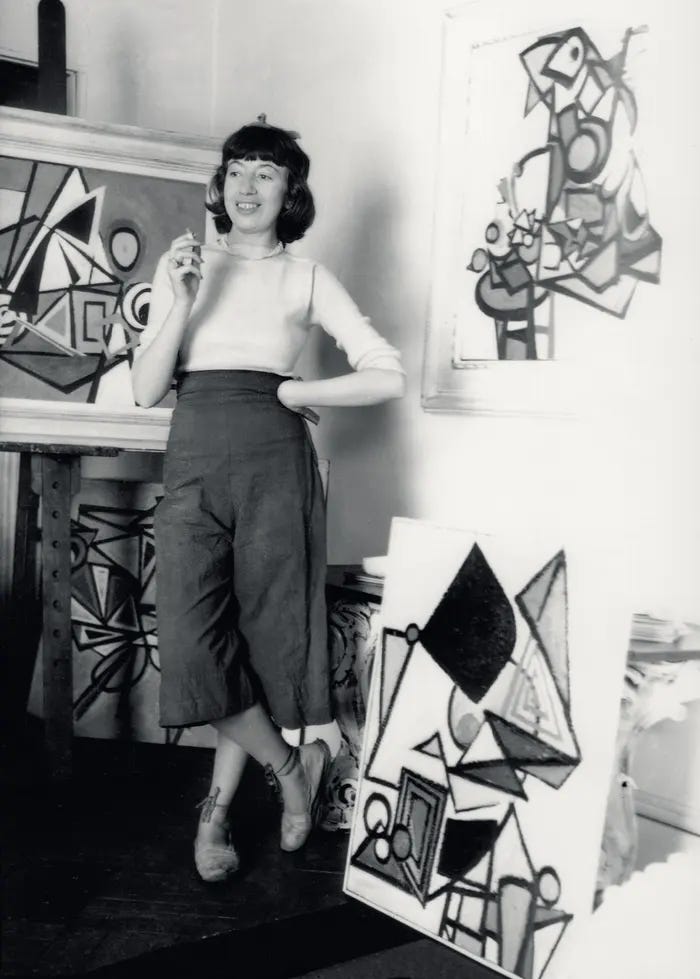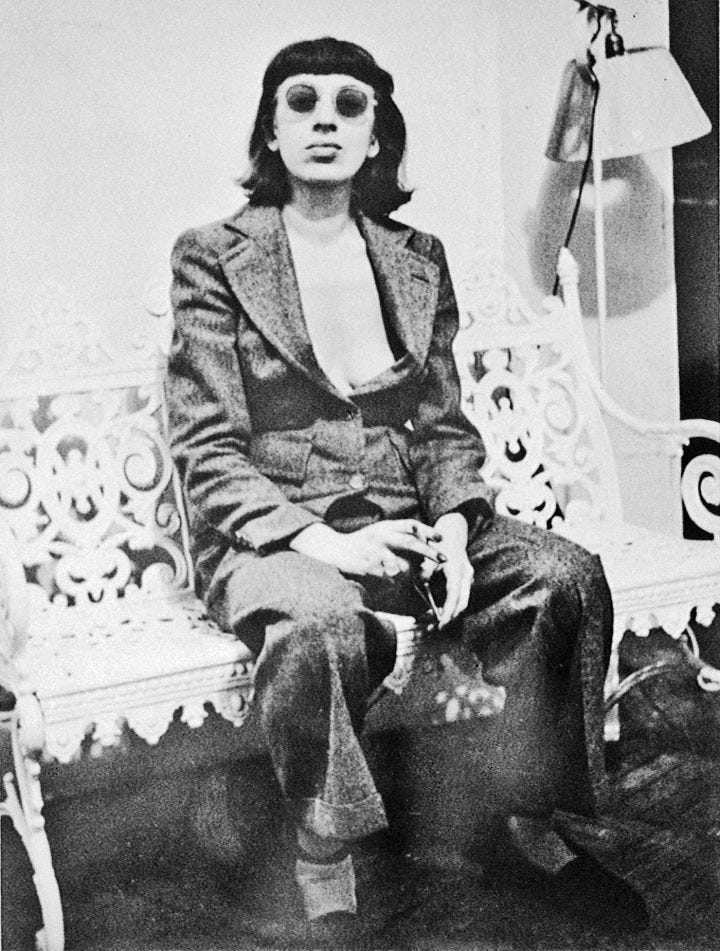Lee Krasner, an influential American abstract expressionist painter, left an indelible mark on the art world with her distinctive style and profound artistic contributions. Often overshadowed by her husband, Jackson Pollock, Krasner's own artistic journey was a fascinating one. This essay aims to delve into the life of Lee Krasner, exploring her relationship with Jackson Pollock and the profound impact of loneliness on her creative process.
Lee Krasner emerged as a pioneering force in the abstract expressionist movement during the mid-20th century. Her work displayed a fusion of bold colors, powerful brushstrokes, and dynamic forms that exuded raw emotion. Krasner's artistic vision challenged traditional norms, breaking new ground and exploring the realms of abstraction with exceptional skill and innovation.
Krasner's relationship with Jackson Pollock, a fellow artist and a prominent figure in abstract expressionism, had a profound influence on her life and art. The two artists met in 1941 and eventually married in 1945. Pollock's rise to fame and the subsequent overshadowing of Krasner's own artistic achievements had a complex impact on their relationship.
Despite the challenges, Krasner played a pivotal role in Pollock's career, providing unwavering support and acting as his advocate. She dedicated herself to nurturing his talent and helping him overcome personal struggles, often sacrificing her own artistic ambitions in the process. While their relationship was fraught with tensions and difficulties, it also served as a source of inspiration for both artists.
Throughout her life, Krasner grappled with profound feelings of loneliness. As a female artist in a predominantly male-dominated art world, she faced considerable challenges and discrimination. Her battle to establish herself as a respected artist in her own right often left her feeling isolated and marginalized.
Furthermore, Pollock's struggles with alcoholism and infidelity created a tumultuous environment, leaving Krasner emotionally drained and isolated. The weight of these experiences instilled a sense of profound loneliness within her, which permeated her artistic endeavors.
While loneliness was a prevalent theme in Krasner's life, it also served as a catalyst for her artistic growth. The solitude she often found herself in allowed her to delve deep into her own thoughts and emotions, ultimately influencing her creative process. Krasner utilized her alone time as an opportunity for introspection, self-discovery, and artistic experimentation.
Embracing her loneliness, Krasner transformed it into a driving force behind her art. Through her work, she channeled her emotions and experiences, transcending her personal struggles and connecting with a wider audience on a profound level.
Despite the challenges she faced, Krasner's unwavering dedication to her art eventually gained her recognition as a formidable artist. In the later years of her life, she received numerous accolades, including retrospectives at major museums and galleries. Her vibrant and energetic canvases continue to captivate audiences, reaffirming her place as a seminal figure in abstract expressionism.
Lee Krasner's artistic journey was marked by passion, sacrifice, and the weight of loneliness. Her relationship with Jackson Pollock, while complex, played a significant role in shaping her life and art. Through the isolation and struggles she faced, Krasner harnessed the power of loneliness, transforming it into a wellspring of inspiration. Today, her work stands as a testament to her remarkable talent and resilience, ensuring her enduring legacy in the annals of art history.
Lee Krasner (1908-1984) was an American abstract expressionist painter and a key figure in the mid-20th-century art movement. Born in Brooklyn, New York, Krasner displayed a talent for art from an early age. She studied at the Cooper Union for the Advancement of Science and Art and later at the National Academy of Design. Krasner further honed her skills at the Art Students League of New York, where she developed a strong foundation in classical techniques.
In the 1930s, Krasner became associated with the Works Progress Administration's Federal Art Project, which provided support for artists during the Great Depression. During this time, she experimented with various styles, including cubism and surrealism, before eventually embracing abstract expressionism.
In 1941, Krasner met fellow artist Jackson Pollock, whom she would later marry. Their relationship had a profound impact on both their personal lives and artistic careers. Despite facing challenges and living in Pollock's shadow, Krasner remained dedicated to her own artistic pursuits. She often supported Pollock, both emotionally and professionally, nurturing his talent and advocating for his work.
Krasner's own artistic style evolved over the years, marked by bold colors, energetic brushwork, and powerful compositions. Her work often reflected a fusion of abstraction and organic forms, displaying a raw emotional intensity. Krasner's approach to art was deeply personal, drawing inspiration from her own experiences, emotions, and struggles.
While Krasner's work received critical acclaim, she faced significant obstacles as a female artist in a male-dominated art world. However, she remained resilient, continually pushing the boundaries and challenging societal norms. Her determination to establish herself as a respected artist in her own right led to a body of work that is celebrated for its innovation and artistic integrity.
In the later years of her life, Krasner gained increasing recognition for her contributions to abstract expressionism. She received numerous accolades and had major retrospectives of her work at prestigious institutions such as the Museum of Modern Art in New York and the Whitney Museum of American Art.
Lee Krasner's artistic legacy continues to inspire and captivate audiences around the world. Her bold and dynamic paintings, infused with personal expression and a profound sense of emotion, serve as a testament to her remarkable talent and enduring impact on the art world.
The amazing
has written an amazing biography about Krasner that’s definitely worth checking out if you want to learn much about her work.Hi, thank you so much for reading. Sorry it may not be up to my usual standards, having to work on my phone to write as my laptop is dead!! Fancy buying me a coffee? That would be so awesome if you could and would help my work towards a new laptop.












I just love that black & white photo of her standing in her studio, the pieces behind her look almost like Picasso's. I think I prefer her work to her husbands!
Someone else I didn't know about! Great info. I know a bit of Pollock, but not much.
Super cool photos of her.